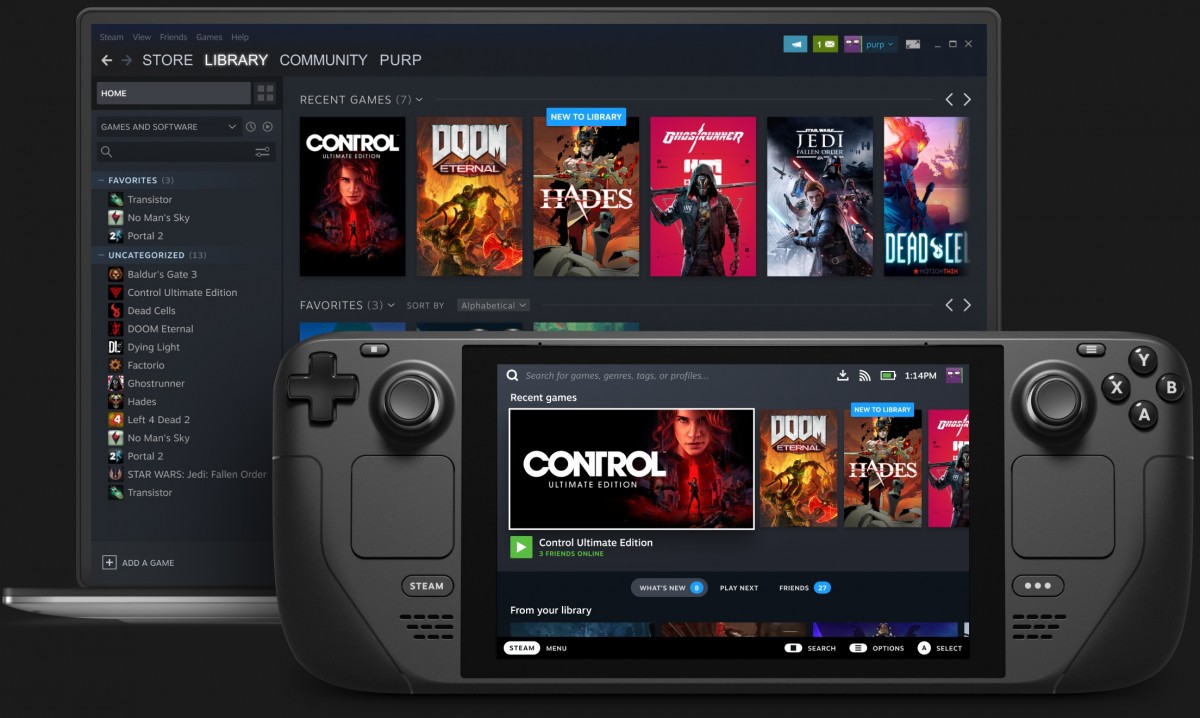Valve’s Steam Deck is currently the talk of the town and, well, there’s a good reason why. No one expected Valve to announce such a potent — and incredibly cheap — portable PC, especially given the current state of the market. We’re a couple of days removed from its announcement, and are finally beginning to learn more and more about this peculiar little device, along with the many exceptional features it’ll support including ray tracing, variable rate shading, FSR, and so on.
For a portable gaming PC, these things are absolutely essential. Ray tracing perhaps less so as you arguably won’t be able to fully perceive its lustre on the small 7″ screen, but VRS and FSR?
They’ll no doubt make Valve’s Steam Deck all the more viable as a gaming console — and doubtless more effective and powerful, too.
Variable rate shading (or VRS, for short) basically increases rendering performance (and, by proxy, your FPS count) by varying the shading rate (i.e. quality) for different regions of each frame. So the most important part of the frame will always be rendered fully, with everything else (the corners, for instance) taking a back seat. If implemented correctly by the developer, you won’t be able to notice the difference in motion — herein lies its magic. The goal of this is rather simple: to free up rendering performance and improve the overall gaming experience.
FSR is a different, albeit no less important feature. In fact, one could argue that the two are intrinsically entwined. In short, AMD’s upscaling technology is designed to boost frame rates in select titles with very little drop-off in graphical fidelity. It’s still a novel feature so don’t expect any miracles, but it has already garnered quite a fair bit of attention and is supposedly very easy to implement. As a result, expect the world’s biggest and most capable developers to board the hype train and implement it in both their existing and future titles.
Plus, it’ll only get better and better as time goes on. Even DLSS wasn’t all that impressive (far from it, in fact) back when it first came out.
Amazing move by Valve! A handheld PC/console hybrid running the SteamOS fork of Arch Linux, and it’s an open platform where users are free to install software or their choosing – including Windows and other stores. https://t.co/jf5TWUWGP5
— Tim Sweeney (@TimSweeneyEpic) July 15, 2021
A Boon to Portable Gaming
Performance-wise, Valve’ Steam Deck will be a lot more powerful than most folks realize — doubly so with features like VRS, FSR, and so on. Programmer Peter “Durante” Thomas perhaps explained it best: “The GPU is about as fast in raw performance as a base PS4, but it’s a much newer and more efficient architecture (the same as PS5/XSX), and it only needs to target 1280×800. In other words, it has about the same raw GPU performance per pixel when targeting 1280×800 as the Xbox Series X has when targeting 4K (slightly more actually).”
With a CPU that is about as half as powerful as those found in PS5/XSX and a whopping 16GB of LPDDR5 RAM (running at an obscenely fast speed), the Steam Deck is bound to impress in all the right ways. We know for a fact just how big of a boon fast RAM (running in dual-channel) is to AMD’s surprisingly potent APUs, so it stands to reason to expect spectacular performance in spite of its small enclosure and meagre capacity for cooling.
Valve is offering an incredible piece of hardware at an equally incredible price. We just hope they’ll be able to sate the demand as these things will surely start flying off the shelves!







